“Half the officers [in the military] do not want to fight, they don’t understand why they should. Those in volunteer detachments are more motivated,” says Alexander Fyodorov (name changed — editor’s note) who fought in the Troy special detachment.
A 38-year-old engineer, he got the idea of going to the battlezone to guard his nation just as the “special operation” started. However, he did not want to sign a contract with the regular military. When mobilisation was declared in September 2022, Alexander packed his things and was off to a training ground of the Main Intelligence Directorate Spetsnaz in the Tambov region.
After a job interview and a security check, he signed a contract for six months. He liked it in the detachment where many were driven by the desire to “stop the NATO expansion eastward”, just like Fydorov himself. “We fight the collective West rather than Ukrainians,” the commanders said. This rhetoric aligned with his personal views.
After a month of training, the volunteers were sent to an area near Luhansk in early November. The detachment was disbanded in late December, after which Alexander joined another volunteer battalion in March 2023 and went to war against NATO again.
Why do people join volunteer units, who they take instruction from, and how they fight in the war: this is what Alexander told Novaya-Europe while on a break between his combat trips.
‘This isn’t what my grandpa fought for’
“I signed my contract with a private military company, not with Troy. I can’t tell you what PMC that was,” Alexander says.
He was warned that this kind of information was classified. Alexander also noted that credentials of his relatives were included in the contract so that they would receive compensation in case he gets killed. He does not remember any other details.
“Money was not what I joined them for,” he explains.
His choice of detachment was virtually random as he stumbled across the Troy-affiliated Telegram channel while surfing the net. After he arrived there, he found out that Troy was subordinate to the Main Intelligence Directorate. Meduza and Verstka report that PMC Redut is the entity that trains its volunteers at the Trigulyay training ground in the eponymous locality in the Tambov region. It looks like that is the mysterious PMC Alexander signed his contract with.
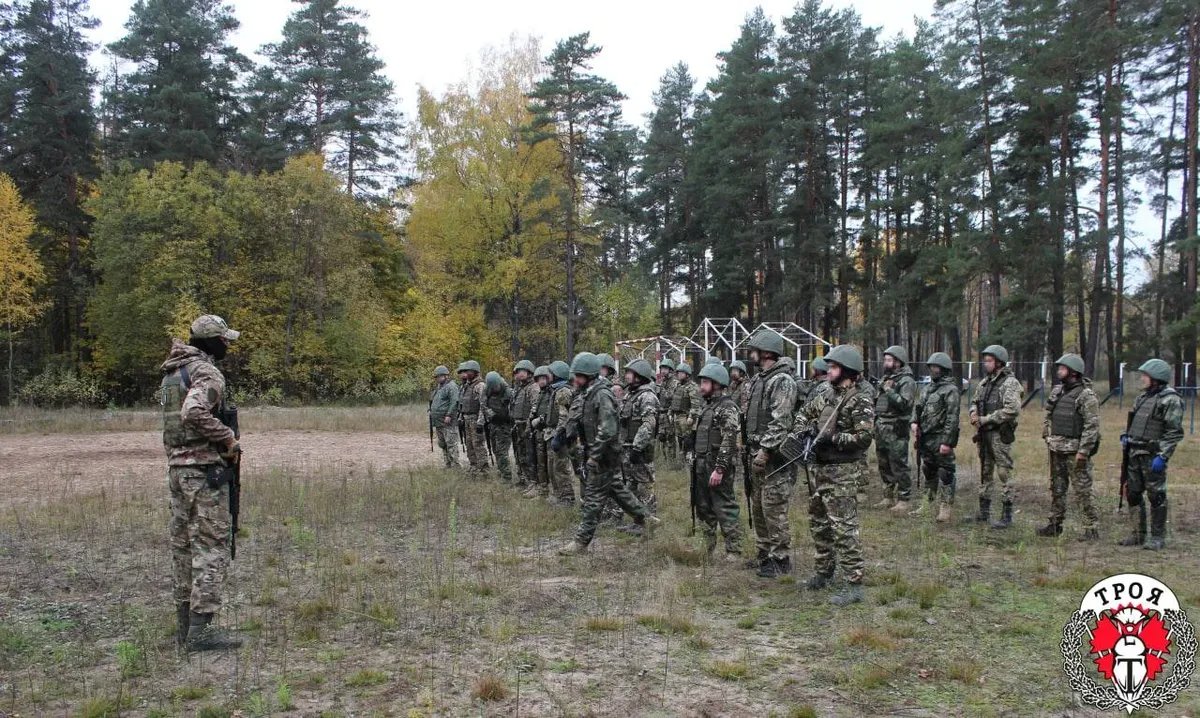
Fighters’ training. Photo: Telegram
Troy became known in 2014 when militia from Horlivka and Kirovske in the Donetsk region gathered into a detachment which was soon referred to as a Spetsnaz reconnaissance company.
In the following years, Troy got a logo, an anthem, and the status of a separate Spetsnaz brigade. “We don’t leave our guys stranded, and we take no prisoners,” is Troy’s slogan.
Alexander met all sorts of people in the detachment: half of them had no prior military experience, just like him, while others did. Among the volunteers were participants of the Chechen wars, three members of internal troops, and a former paratrooper. This is how a 19-year-old young guy who just finished his mandatory service and a grey-haired 50-year-old man ended up in the same company.
Fyodorov traded a good job in a private firm for a volunteer career. He explained his decision to his boss, who understood his reasoning, Alexander says. “To guard my Homeland!” he mentioned his motivation. From his point of view, Ukraine is not much of a real threat, unlike NATO that used to set up military exercises in Crimea (The Sea Breeze exercise was indeed hosted off the coast of Crimea prior to 2014, after which it was moved to Odesa and Ukraine’s southern regions — editor’s note).
“Yes, it was our country that was the formal attacker this time, but actually we are stopping the NATO expansion there,” he believes.
NATO expansion and the war against the collective West were often mentioned by Alabay, the detachment commander, and Yakut, the headquarters commander.
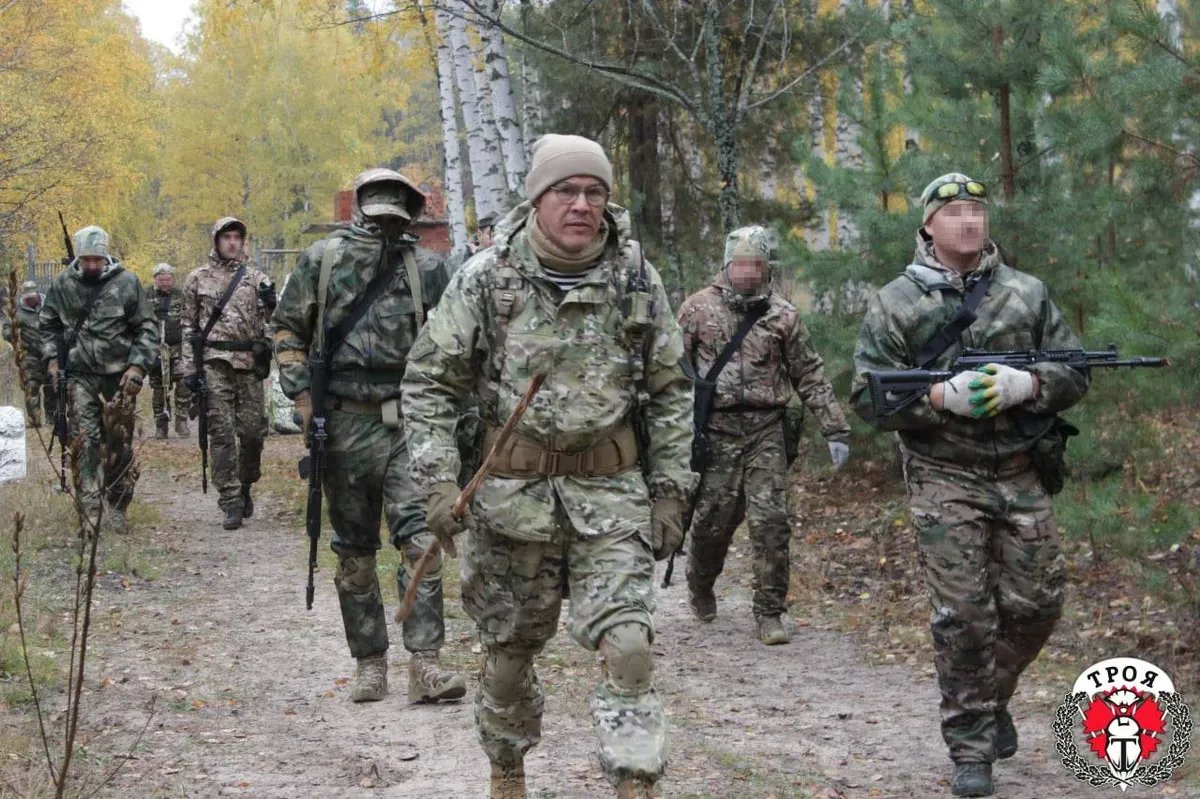
The headquarters commander known by his Yakut call sign. Photo: Telegram
‘We’ll fight a war and kill everyone’
Alexander did not name any of his commanders during our first talk: he either did not know them, or was unwilling to share “classified” information that can be googled within five minutes. He barely knew anything about their professional background: are they acting servicemen or veterans, where they served, and what is their rank? To him, a man with no military background, both appeared as seasoned servicemen, although they mostly wore uniforms without any insignia. There was an occasion, though, when the detachment’s commander attended a TV show in 2015, wearing colonel’s shoulder marks.
Alabay makes no secret of his past as he shares the link to his profile on the Ukrainian Myrotvorets website:
“Vladimir Nikolayevich Novikov
A terrorist, a fighter with an illegal armed militia group. Call sign: Alabay. Commander of a Spetsnaz Troy detachment. Born: 04.09.1974.
Citizenship: Ukraine.
An outstandingly brutal man, he gets satisfaction through torturing servicemen, which he mentioned numerous times to his close circle <…>,”
reads the database of individuals who, as the website’s creators believe, were involved in the Donbas conflict and “crimes against the basics of Ukraine’s national security”.
Alexander knows nothing of the headquarters commander Sergey Kolmogorov, call sign Yakut.
“Our folks said that Yakut was a GRU [Main intelligence Directorate] colonel and a living legend who participated in all local conflicts,” Alexander says.
He knows people who joined the detachment after watching the Street of Truth YouTube channel where Kolmogorov appeared on many occasions. In the videos, Kolmogorov is referred to as a “military conflictologist”. Same as Novikov, he was mentioned as a field commander in a video uploaded to the Alabay+ YouTube channel in 2015. Sergey Kolmogorov is the full namesake of the son of Vasily Kolmogorov, a former prosecutor general of Yakutia and the deputy of Russia’s Prosecutor General. The prosecutor’s son also had a nickname Yakut — what a coincidence! His name was mentioned several times in media in connection with bills fraud and raider capture.
Everyone in Troy referred to each other using call signs, sometimes not knowing the real names of their comrades-in-arms.
“It’s simply more convenient, and some guys just do not want to reveal their names. For example, we had a lad from Ukraine, he was born in Kharkiv but resided in Belgorod. When the city was bombed, he joined the detachment,” Alexander says.
Novikov-Alabay was posting ads in his channel every day, inviting people to join Troy.
“This is your chance to serve in an elite unit instead of a ‘wherever they send me’ one!”
said the advertisement. He would sometimes announce lucky offers, promising a valuable gift to anyone who arrives before the stated date. “Come join Troy, we’ll fight a war and kill everyone!” he said in a video, forming a V-symbol with his fingers.
All-together donations
“I was at the training ground two or three times only, we fired some AKs and machine guns,” Alexander says.
He also admits that the month of training did not teach him to take good aim.
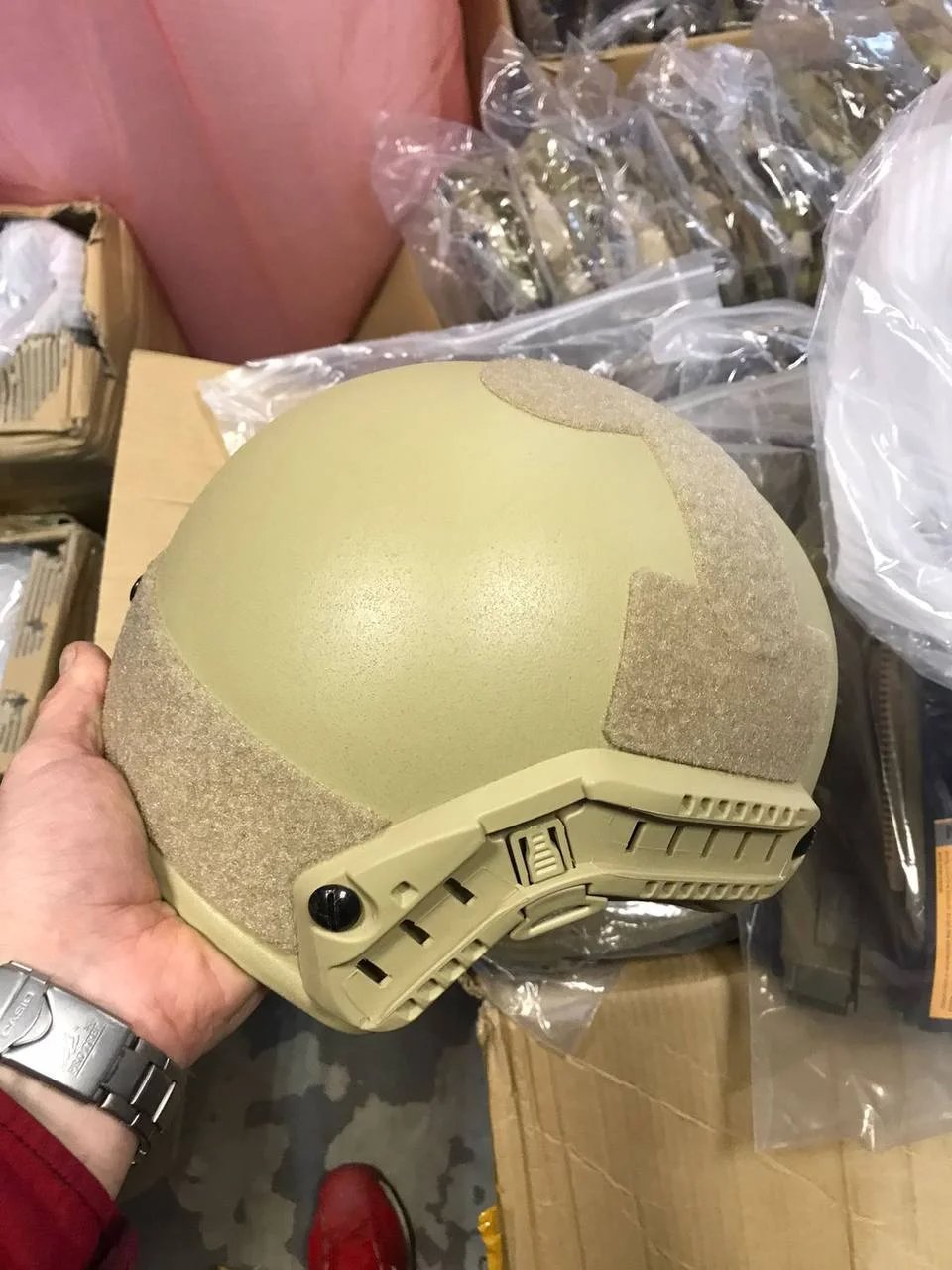
A helmet. Photo: Telegram
HQ commander Kolmogorov was in charge of firing and tactical training. Alexander says the tactical side was always the priority and included moving around in a marching column, setting up combat outposts, and working in a group. The training simulated real combat: newbies would move around in short runs, and instructors would walk on their left and right, shooting at the spaces in front of the newbies. It seemed just as if they were shooting against people’s feet. Yakut required all newbies to wear body armour and helmets during training in order to “get used to your equipment”, the HQ commander said.
The volunteers were provided armour and helmets which had numbers on them; apparently, those were taken from some Defence Ministry warehouses. Alexander says that the steel helmet looked like a modern-day one, although it was heavy. The body armour with steel plates inside had a weight of 12 kg, while the entire body kit was almost 20 kg. This forced everyone who could do so to purchase Ratnik body armour with “NATO” plates: those were only 3 kg, and about 6 kg with all the attachments.
Alexander’s calculations showed that all the items provided by the Defence Ministry had a total cost of about $800. The rest was “charity aid”. Alabay, the detachment’s commander, posted donation ads on his channel every day, and shared numbers of three of his credit cards to receive the donations. “ALL TOGETHER NOW”, he wrote in uppercase. There were whip-arounds all the time:
- 4.500.000 [~€50,000] rubles on 250 kevlar helmets, 17.850 rubles [€200] each;
- 350.000-400.000 rubles [€3.900-4.450] on 250 cartridge pouches for med kits plus money to buy at least 100-150 backpacks, no longer available from the warehouse;
- 2.700.000 rubles [€30.000] on 200 kits of tactical equipment…
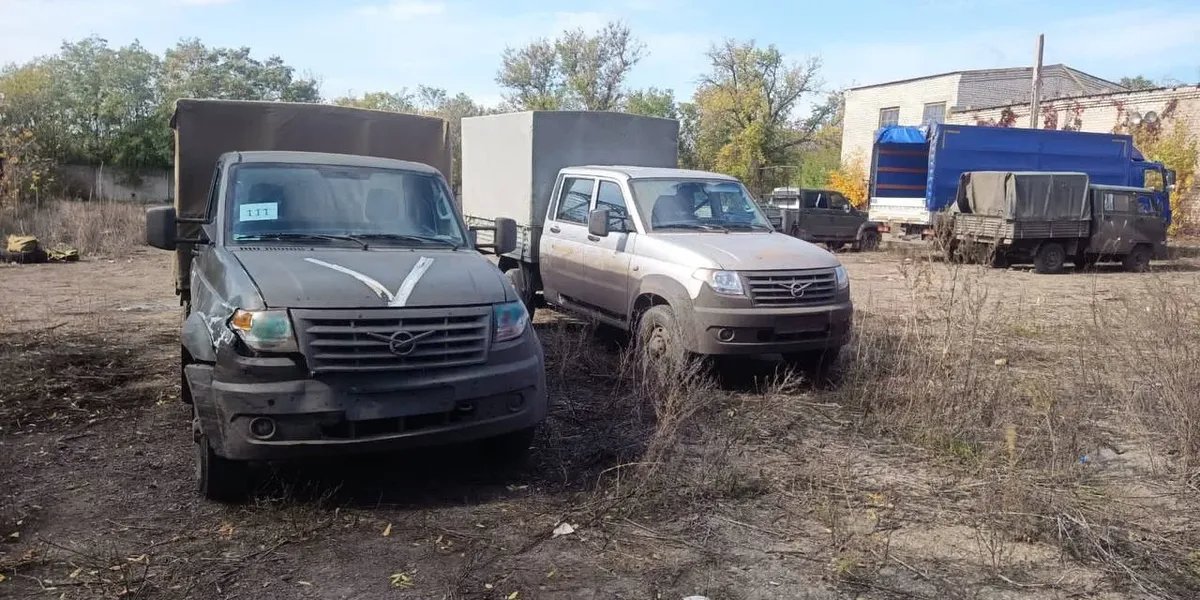
Battered UAZ patriot vehicles. Photo: Telegram
Sometimes sympathisers would gift their used cars to the detachment. Those were later repaired in the camp and painted in battle colours.
Donation announcements were posted in a non-stop mode, sometimes several times in a day. Alexander’s company was also collecting money for a drone. All of them knew by then that Ukrainians were actively using those, and quite successfully, so the Trojans also decided to buy a drone. They picked the DJI Mavic 3 model worth 260.000 rubles [€2.900] and chipped in together.
“Russia’s military leadership underestimated the prospect of using UAVs. It takes the Defence Ministry decades to implement some new tech,” Alexander explains.
He perceives the sluggishness of the ministry as an unfortunate but inevitable attribute. HQ Commander Kolmogorov spoke much sharper on this subject, proposing to send auditors independent of the Defence Ministry to each military registration office. “All the draft officers belong in a bloody prison. It’s total larceny! T-O-T-A-L!” he said in a video posted on 14 December.
Sometimes he would share his vision of the military and political situation with recruits right at the training ground: “When people say that we are retreating — we are not retreating. We simply stop providing for political interests. We start doing war, and not politics… for fuck’s sake.”
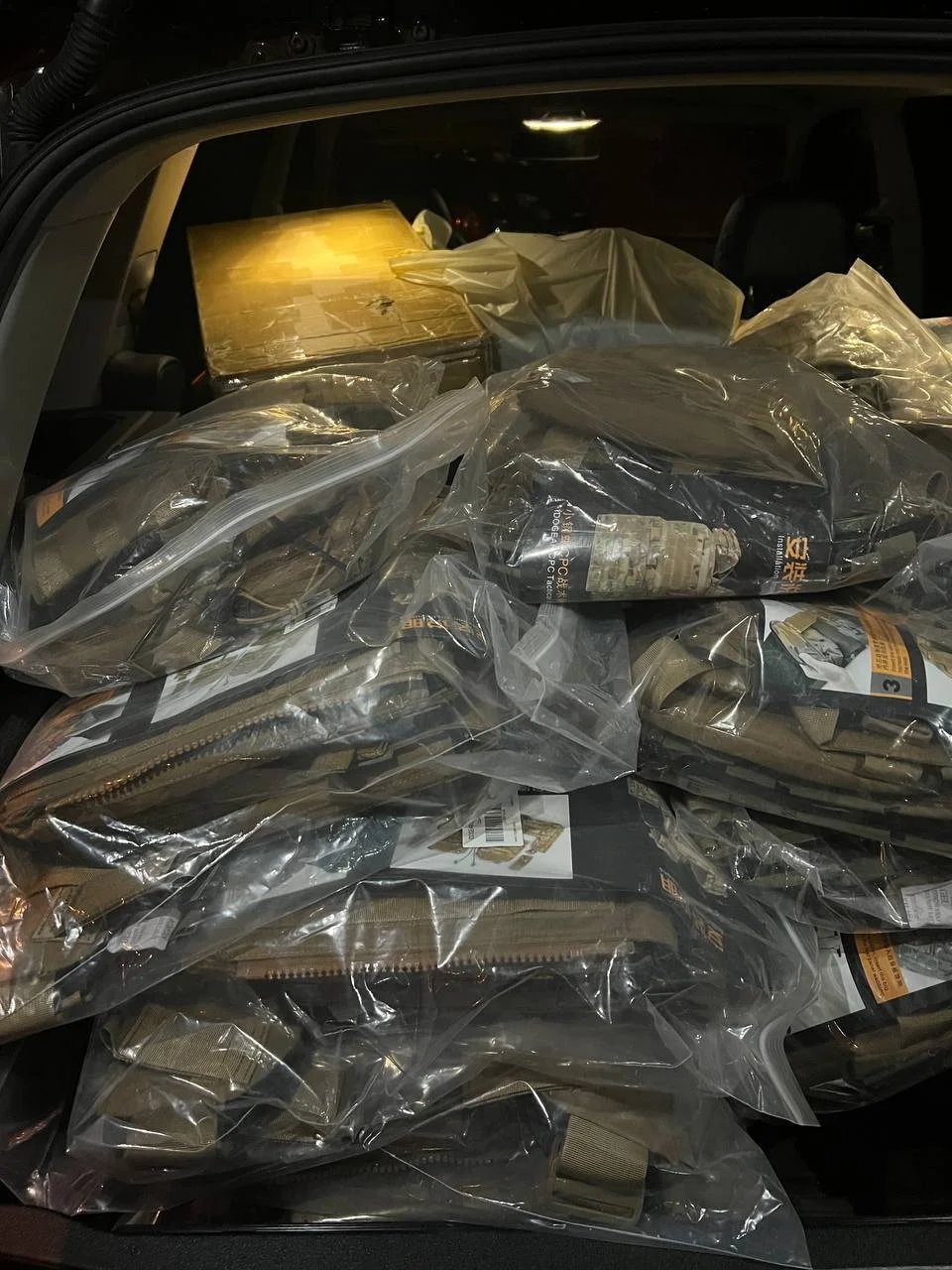
Packages with body armour. Photo: Telegram
He even thinks the Russian world project is political. Kolmogorov believes that this project only exists in the minds of the people who created it, i.e., Putin’s administration. This is why all Ukrainian cities need to be captured, Yakut concludes.
Volunteers also spoke about the situation on the front line.
“Everyone I spoke to could not understand why we did not bomb bridges, roads, infrastructure, through which ammunition is delivered to the front? There was no understanding as to why the war was going on for so long and how it could end,” Alexander says.
He also adds that his comrades-in-arms used to blame everything on stupid generals and were perplexed why half of the commanders were not replaced by normal ones. However, Alexander is struggling to name at least one of those.
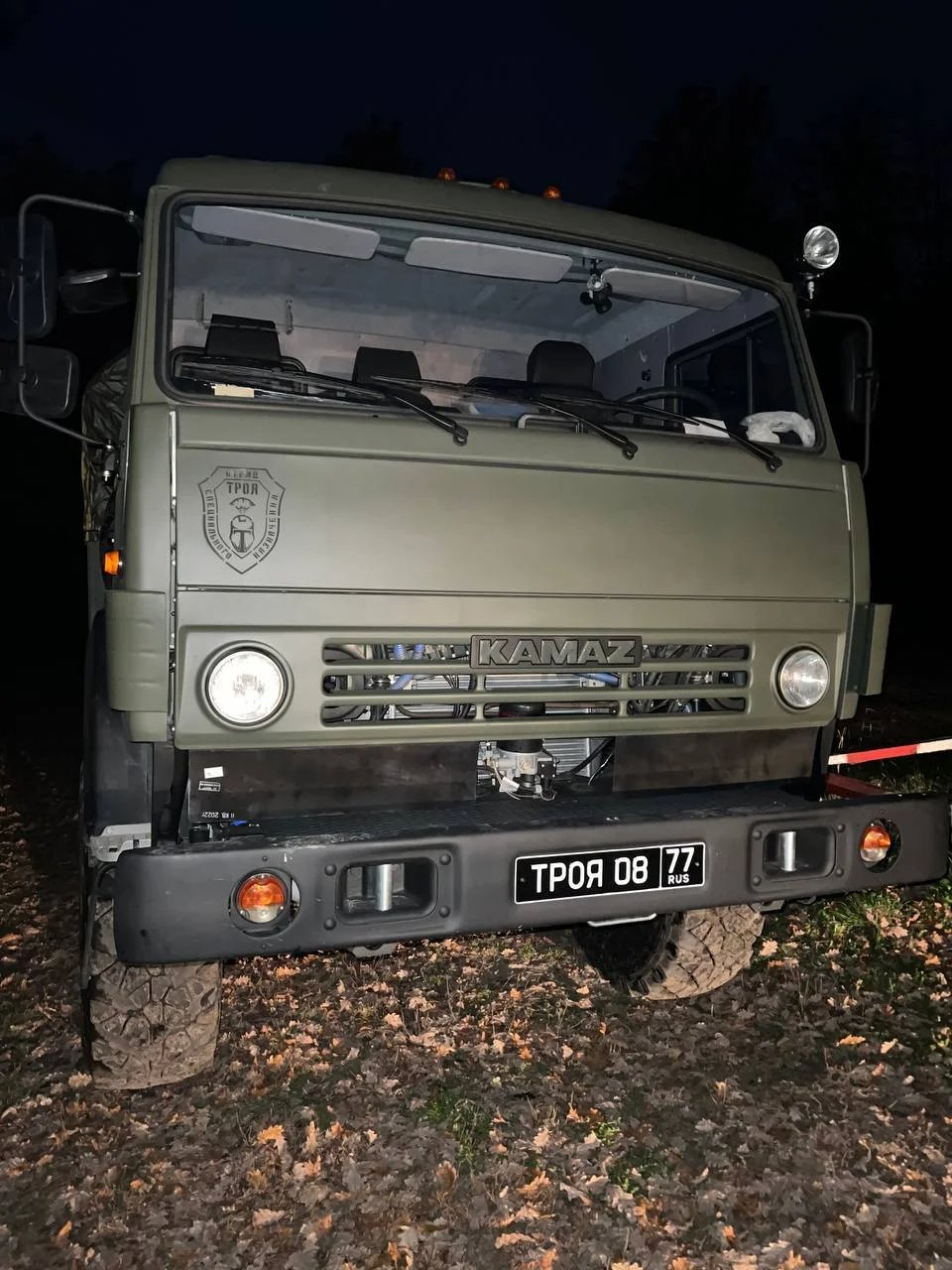
A new KAMAZ with a Troy logo. Photo: Telegram
Drone war
“The draftees looked very dismal. We had some issues with deliveries, but the ones they had were far worse,” Alexander says.
He first saw the drafted soldiers at the front line in the Luhansk region, near Novoselivske, about 20 kilometres from Svatove, where the volunteers arrived in early November.
Their detachment was entering Ukrainian territory through a military corridor. The volunteers were stationed near Luhansk, a two hours drive from the front line. The detachment, 200-250 individuals in total, was scattered around nine locations to prevent losing all the men in case of an enemy strike. “They cared to protect us,” Alexander says, recalling the Makiivka strike that happened on 1 January and killed many draftees.
Different units received their combat tasks and were off to the front line, substituting each other every now and then. Alexander and his comrades-in-arms were to head for the Svatove direction in December. The front line passed along the Southern Railway: on one side of it there were Ukrainians, on the other, some 50 metres away, in a small forest area known as Popovy forest, there were positions of Russian troops, both volunteers and draftees. The space between the positions was strewn with shell craters.
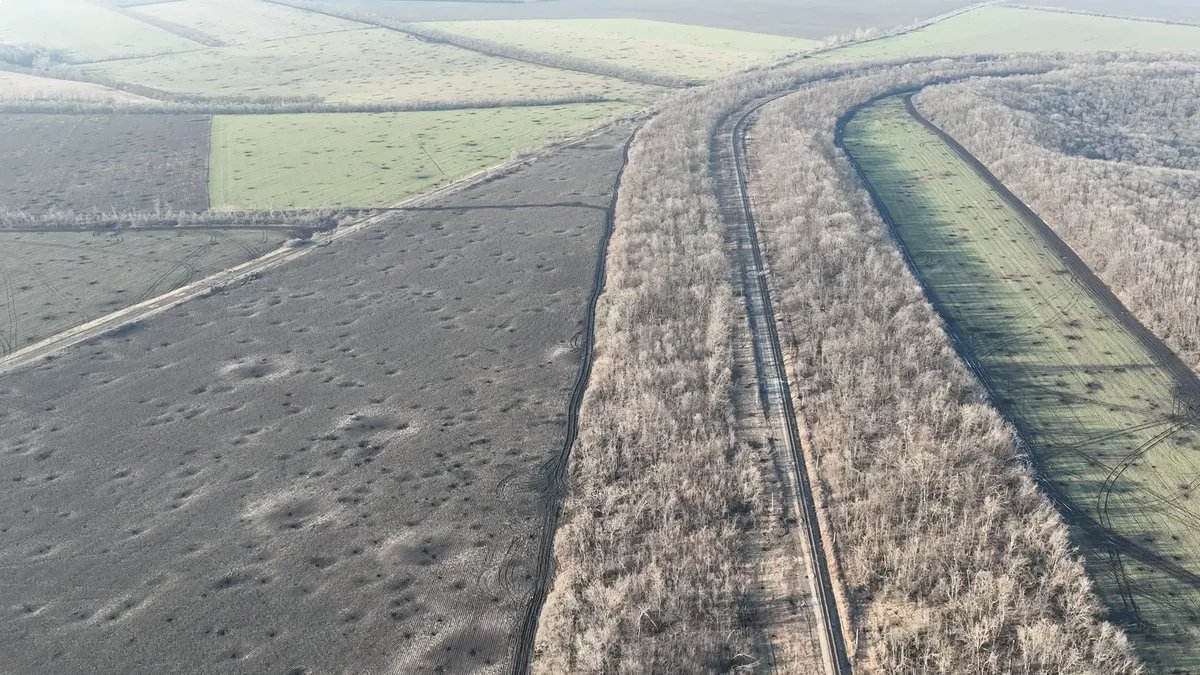
The position near Novoselivske. Drone view. Photo: Alexander Fyodorov
While Alexander’s squad was on its mission, there were no armed clashes. Instead, there was a drone war: the sides launched their devices which identified targets, such as equipment, artillery, and groups of manpower, and transmitted the coordinates to the control point. And then mortars would strike those targets.
Alexander admits he was aware that he could have been killed any moment.
“Why does the opposing side have unending munitions? Why isn’t our command taking any decisive measures?” the volunteers questioned amid the strikes.
Once, the Trojans managed to take down a Ukrainian attack drone using assault rifles which they called a “cow” as it resembled an artiodactyla laying flat on ice.
“This one can carry a grenade or two hollow charges, dropping those on a tank or an armoured vehicle. Or it can be used for fire adjustment,” Alexander notes.
The volunteers soon suffered a retaliatory helicopter attack in return for the downed “cow”.
“It’s best to hide from the ‘cow’; if it is hovering, it means that it has noticed your position and will fly in soon, so everyone needs to jump out of their cover and try to shoot it down with an assault rifle to take it down,” Alexander shares his experience.
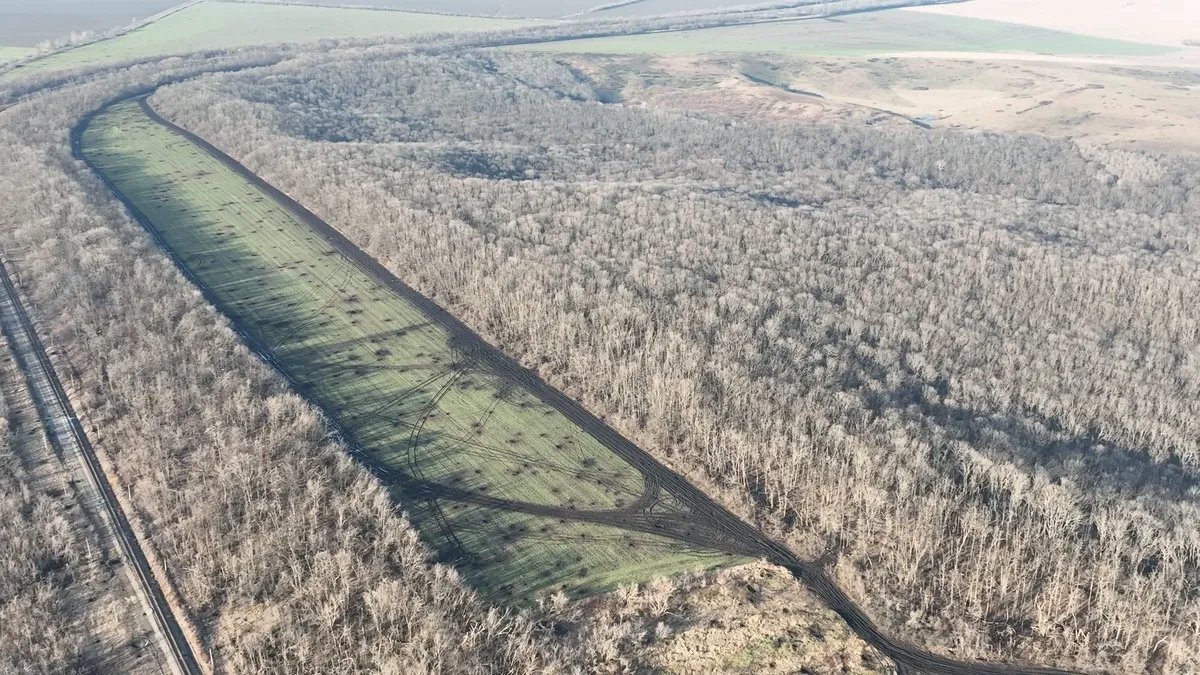
The Popovy forest position near Novoselivske. Drone view. Photo: Alexander Fyodorov
Alexander’s company had a group of servicemen in charge of the two UAVs they had: a training one and the one they purchased with their own money; both were used for real-time reconnaissance. Once Alexander asked to see how the drone was launched. He saw the “other side” (this is what he calls the Ukrainians), their trenches and shelters on the display.
Alexander memorised the sound that the working UAV battery makes while flying, and started listening closely to the noises around him.
“Once me and another fellow were walking in the dark, heard that noise, and hid beside a tree,” he says. Another time, he saw draftees walking along the forest path, and a drone was flashing a red light over their heads, but they did not hear or see it: “It could have dropped a grenade on them,” Alexander says, giving little credit to training experience and discipline among the draftees.
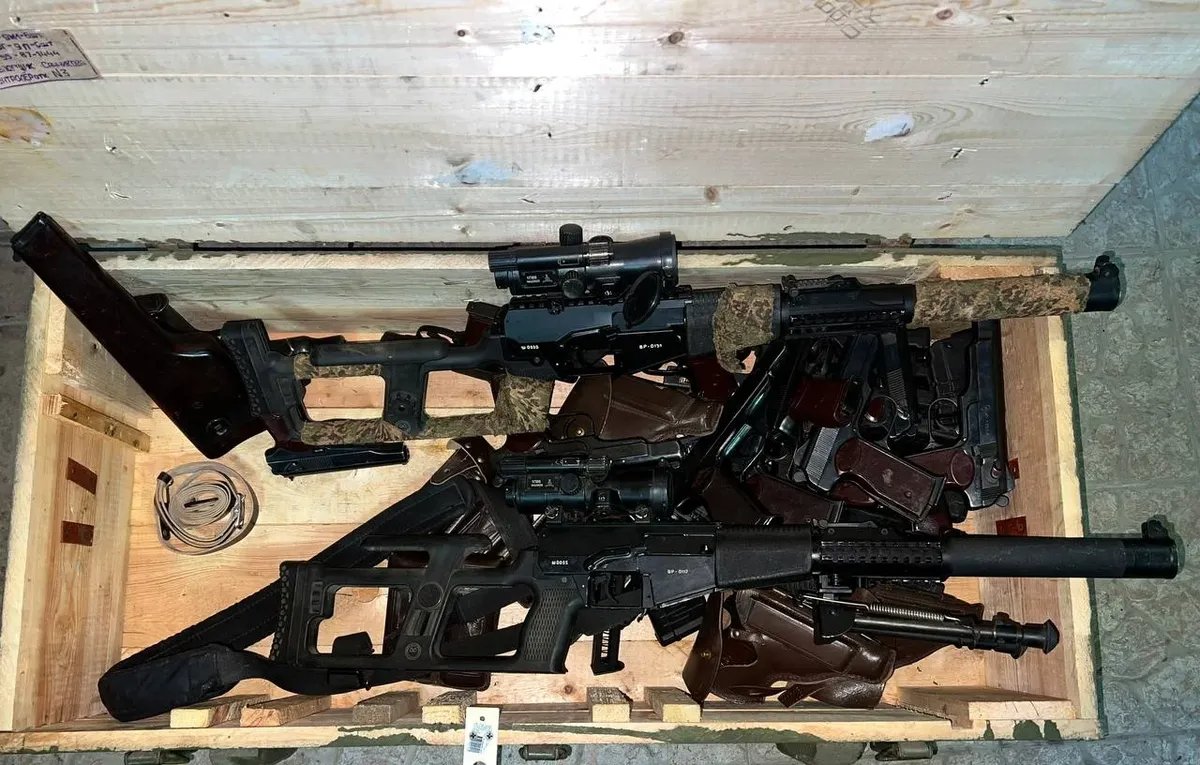
“Humanitarian aid”. Photo: Telegram
When carrying boxes, the military sometimes misplaced parts of the cargo, and many valuable items could be found in the dump, for example, an ammo box, Alexander says. Useful items were scattered throughout the forest: almost every bush had packages of thick foil, army rations, under it.
Alexander was most delighted to find some thick wrapping and a sleeping bag which the fighters used to rug up their shelter with a hole near the entrance.
“There was a mess with the logistics, but we did not experience a shortage of ammunition,” Alexander says as he laughs.
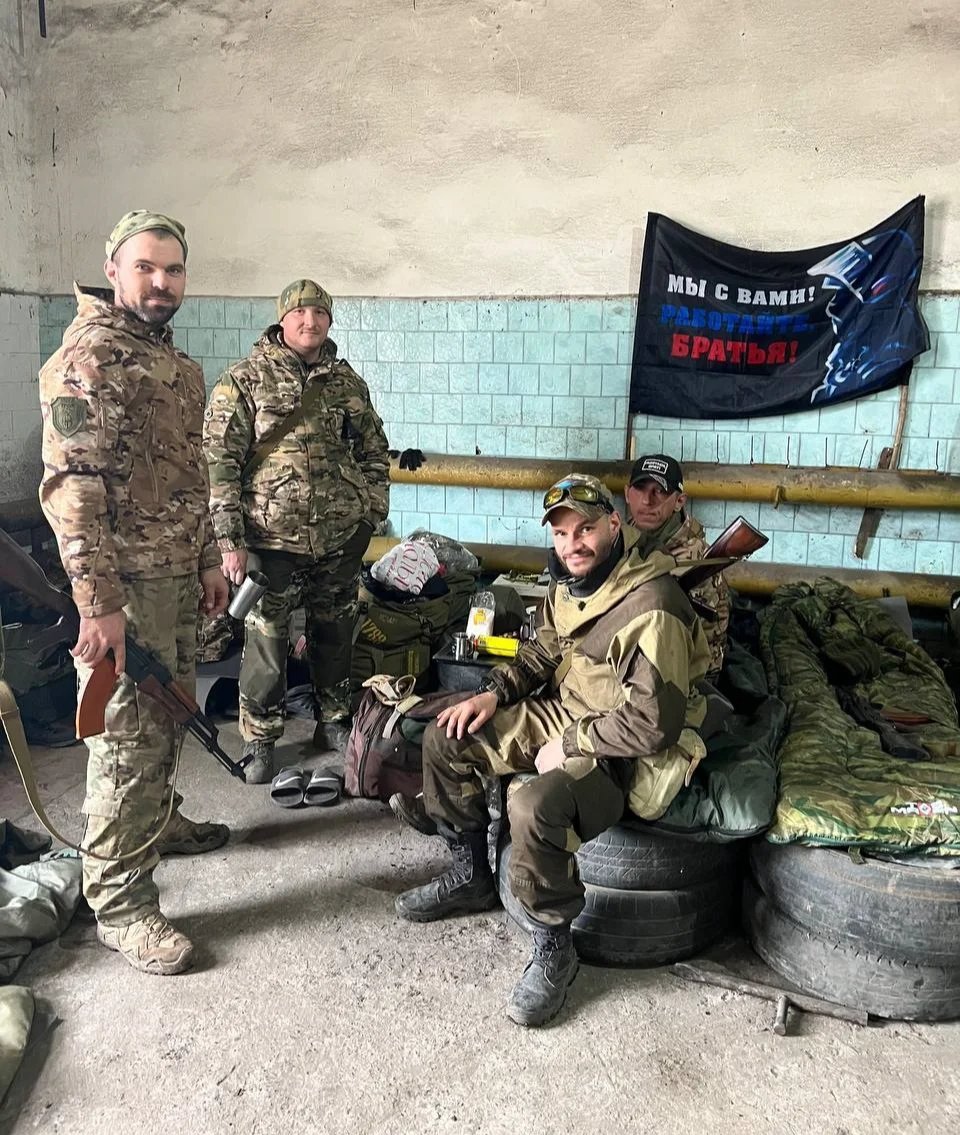
A group of fighters. The leftmost one is Mashuk. Photo: Telegram
Speed march from the trenches
“After a month spent on the other side, Yakut told us that Mashuk had been killed,” Alexander says.
Mashuk was the call sign of a volunteer who served as a bomb thrower in a reconnaissance company. Alexander does not know his real name. The only thing he knows about the man is that he used to live near Moscow and work as a taxi driver. Mashuk — Ilya Stroyev — was killed in late November after a mortar strike. He was the first Troy member to lose his life in combat.
In late December, three more volunteers with call signs Latvian, Springlet, and Hedgehog were killed, and another fighter was heavily injured.
Later, Troy commander Novikov-Alabay wrote on his Telegram channel that a group led by Yakut carried the dead bodies away from the battlefield and delivered them to the morgue in Troitske. Alexander was unaware of this as he was in trenches all that time. Kolmogorov arrived at the place in the early hours of 30 December and informed the fighters that he had to drive them away from the location as the detachment had been formally disbanded on 28 December.
Trying not to get under the cameras of the “cow”, the fighters reached the car that Yakut had left about seven kilometres from the front line. After about two hours, they were at the base and allowed to either stay there for the New Year or go home. Alexander and a friend of his packed their backs, hauled a car to Luhansk and from there to the state border, crossed the border on foot and headed for Rostov-on-Don. At 8 PM on 31 December, Alexander rang the doorbell of his parents’ home.
Nationwide support
“Two of our lads joined PMC Wagner, another one joined Sparta, and one more joined Tiger, another volunteer detachment just like Troy,” Alexander says.
All of them asked him to join them. “It’s so weird in the civilian world,” Alexander’s comrade-in-arms told him when leaving for his third volunteer battalion. Alexander considered various detachments, but was hoping that Troy would be reunited.
“I liked its atmosphere”, he says.
Alexander has no idea why Troy was disbanded. Perhaps it was the consolidation of detachments, he suggests. He heard from his acquaintances in various staffs that the decision to disband Troy was made by the Defence Ministry.
Sergey “Yakut” Kolmogorov said in his later public speeches that the detachment was temporarily withdrawn and was being reformatted. He noted that the Defence Ministry was trying to understand the role of volunteer detachments in its structure.
Nonetheless, Vladimir “Alabay” Novikov continues to collect donations for heat cameras, drones, and other things.
“Our lads are laughing at this: ‘who the fuck is he collecting this for? The detachment is no more,’” Alexander says as he laughs.
Novikov registered the Troy Charity Foundation in March “to legalise the nationwide support”.
Tired of waiting for the reunion of Troy, Alexander left for the Luhansk region in late March where he joined a volunteer detachment. He did not reveal which one.
Join us in rebuilding Novaya Gazeta Europe
The Russian government has banned independent media. We were forced to leave our country in order to keep doing our job, telling our readers about what is going on Russia, Ukraine and Europe.
We will continue fighting against warfare and dictatorship. We believe that freedom of speech is the most efficient antidote against tyranny. Support us financially to help us fight for peace and freedom.
By clicking the Support button, you agree to the processing of your personal data.
To cancel a regular donation, please write to [email protected]

